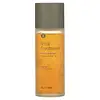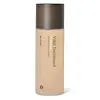What's inside
What's inside
 Key Ingredients
Key Ingredients

 Benefits
Benefits

 Concerns
Concerns

 Ingredients Side-by-side
Ingredients Side-by-side

Water
Skin ConditioningButylene Glycol
HumectantGlycerin
HumectantPEG-32
Humectant1,2-Hexanediol
Skin ConditioningPEG-40 Hydrogenated Castor Oil
EmulsifyingAcrylates/C10-30 Alkyl Acrylate Crosspolymer
Emulsion StabilisingZea Mays Starch
AbsorbentMannitol
HumectantMicrocrystalline Cellulose
AbsorbentGlycine Max Seed Extract
Skin ConditioningArachis Hypogaea Fruit Extract
Skin ConditioningCeratonia Siliqua Fruit Extract
MaskingLens Esculenta Fruit Extract
Skin ConditioningPhaseolus Angularis Seed Extract
AntioxidantPhaseolus Radiatus Seed Extract
Skin ConditioningPhaseolus Vulgaris Seed Extract
Skin ConditioningMaltodextrin
AbsorbentAdenosine
Skin ConditioningPotassium Hydroxide
BufferingLeuconostoc/Radish Root Ferment Filtrate
AntimicrobialCaramel
Cosmetic ColorantDisodium EDTA
Polyglutamic Acid
Skin ConditioningSodium Hyaluronate
HumectantHydrogenated Lecithin
EmulsifyingTocopheryl Acetate
AntioxidantCandida Bombicola/Glucose/Methyl Rapeseedate Ferment
AntimicrobialArgania Spinosa Kernel Oil
EmollientOlea Europaea Fruit Oil
MaskingAvena Sativa Kernel Extract
AbrasiveCarbomer
Emulsion StabilisingPolysorbate 20
EmulsifyingEthylhexylglycerin
Skin ConditioningPalmitoyl Tripeptide-1
Skin ConditioningPalmitoyl Tetrapeptide-7
Skin ConditioningCitrus Aurantium Bergamia Fruit Oil
MaskingCitrus Aurantium Dulcis Peel Oil
MaskingMentha Piperita Oil
MaskingWater, Butylene Glycol, Glycerin, PEG-32, 1,2-Hexanediol, PEG-40 Hydrogenated Castor Oil, Acrylates/C10-30 Alkyl Acrylate Crosspolymer, Zea Mays Starch, Mannitol, Microcrystalline Cellulose, Glycine Max Seed Extract, Arachis Hypogaea Fruit Extract, Ceratonia Siliqua Fruit Extract, Lens Esculenta Fruit Extract, Phaseolus Angularis Seed Extract, Phaseolus Radiatus Seed Extract, Phaseolus Vulgaris Seed Extract, Maltodextrin, Adenosine, Potassium Hydroxide, Leuconostoc/Radish Root Ferment Filtrate, Caramel, Disodium EDTA, Polyglutamic Acid, Sodium Hyaluronate, Hydrogenated Lecithin, Tocopheryl Acetate, Candida Bombicola/Glucose/Methyl Rapeseedate Ferment, Argania Spinosa Kernel Oil, Olea Europaea Fruit Oil, Avena Sativa Kernel Extract, Carbomer, Polysorbate 20, Ethylhexylglycerin, Palmitoyl Tripeptide-1, Palmitoyl Tetrapeptide-7, Citrus Aurantium Bergamia Fruit Oil, Citrus Aurantium Dulcis Peel Oil, Mentha Piperita Oil
Water
Skin ConditioningPanax Ginseng Root Extract 11%
EmollientPlatycodon Grandiflorus Root Extract 8.75%
AntioxidantCodonopsis Lanceolata Root Extract 8.75%
Skin ConditioningNelumbo Nucifera Root Extract 8.75%
Skin ConditioningArctium Lappa Root Extract 8.75%
Skin ConditioningButylene Glycol
HumectantGlycereth-26
Humectant1,2-Hexanediol
Skin ConditioningGlycerin
HumectantHydroxyethyl Urea
HumectantViscum Album Leaf Extract
SoothingImperata Cylindrica Root Extract
Skin ConditioningPoria Cocos Extract
Skin ConditioningPaeonia Lactiflora Extract
AstringentGlycyrrhiza Glabra Root Extract
BleachingAngelica Gigas Root Extract
Skin ConditioningCimicifuga Racemosa Root Extract
AntimicrobialRehmannia Glutinosa Root Extract
Skin ConditioningDioscorea Japonica Root Extract
Skin ConditioningAstragalus Membranaceus Root Extract
EmollientLepidium Meyenii Root Extract
Skin ConditioningSedum Rosea Root Extract
AntioxidantPaeonia Suffruticosa Root Extract
Skin ProtectingFicus Carica Fruit Extract
HumectantPunica Granatum Extract
AstringentMorus Alba Fruit Extract
AntioxidantGinkgo Biloba Nut Extract
Skin ConditioningHamamelis Virginiana Leaf Extract
Skin ConditioningCandida Bombicola/Glucose/Methyl Rapeseedate Ferment
AntimicrobialArgania Spinosa Kernel Oil
EmollientOlea Europaea Fruit Oil
MaskingPEG-40 Hydrogenated Castor Oil
EmulsifyingDimethicone
EmollientAcrylates/C10-30 Alkyl Acrylate Crosspolymer
Emulsion StabilisingHydrogenated Lecithin
EmulsifyingRosa Damascena Flower Oil
MaskingDipropylene Glycol
HumectantPentylene Glycol
Skin ConditioningCaprylyl Glycol
EmollientIsopropyl Myristate
EmollientPotassium Hydroxide
BufferingDisodium EDTA
Xanthan Gum
EmulsifyingCaramel
Cosmetic ColorantWater, Panax Ginseng Root Extract 11%, Platycodon Grandiflorus Root Extract 8.75%, Codonopsis Lanceolata Root Extract 8.75%, Nelumbo Nucifera Root Extract 8.75%, Arctium Lappa Root Extract 8.75%, Butylene Glycol, Glycereth-26, 1,2-Hexanediol, Glycerin, Hydroxyethyl Urea, Viscum Album Leaf Extract, Imperata Cylindrica Root Extract, Poria Cocos Extract, Paeonia Lactiflora Extract, Glycyrrhiza Glabra Root Extract, Angelica Gigas Root Extract, Cimicifuga Racemosa Root Extract, Rehmannia Glutinosa Root Extract, Dioscorea Japonica Root Extract, Astragalus Membranaceus Root Extract, Lepidium Meyenii Root Extract, Sedum Rosea Root Extract, Paeonia Suffruticosa Root Extract, Ficus Carica Fruit Extract, Punica Granatum Extract, Morus Alba Fruit Extract, Ginkgo Biloba Nut Extract, Hamamelis Virginiana Leaf Extract, Candida Bombicola/Glucose/Methyl Rapeseedate Ferment, Argania Spinosa Kernel Oil, Olea Europaea Fruit Oil, PEG-40 Hydrogenated Castor Oil, Dimethicone, Acrylates/C10-30 Alkyl Acrylate Crosspolymer, Hydrogenated Lecithin, Rosa Damascena Flower Oil, Dipropylene Glycol, Pentylene Glycol, Caprylyl Glycol, Isopropyl Myristate, Potassium Hydroxide, Disodium EDTA, Xanthan Gum, Caramel
Alternatives
Ingredients Explained
These ingredients are found in both products.
Ingredients higher up in an ingredient list are typically present in a larger amount.
1,2-Hexanediol is a synthetic liquid and another multi-functional powerhouse.
It is a:
- Humectant, drawing moisture into the skin
- Emollient, helping to soften skin
- Solvent, dispersing and stabilizing formulas
- Preservative booster, enhancing the antimicrobial activity of other preservatives
Acrylates/C10-30 Alkyl Acrylate Crosspolymer is a synthetic polymer. It is used to thicken and improve the texture of products. Due to its properties, it can prevent water and oil ingredients from separating.
You may know this ingredient as argan oil. Argan Oil has antioxidant, hydrating, and soothing properties.
Studies have shown argan oil can help fight again radical damage from the sun. This makes it effective at preventing hyperpigmentation.
Large amounts of vitamin E found in argan oil helps the skin retain water. Argan oil also contains fatty acids such as linoleic acid, oleic acid, and palmitic acid. It is also a good source of lipids.
Another benefit of argan oil is skin-soothing. It can help reduce inflammation-related skin symptoms.
Argan Oil is effective at regulating sebum production in pores. This can make it effective at treating hormonal acne.
Traditionally, argan oil was used for its antibacterial and antifungal properties. However, argan oil contains fatty acids that may make it not fungal-acne safe.
Argan Trees are native to Morocco.
Learn more about Argania Spinosa Kernel OilButylene Glycol (or BG) is used within cosmetic products for a few different reasons:
Overall, Butylene Glycol is a safe and well-rounded ingredient that works well with other ingredients.
Though this ingredient works well with most skin types, some people with sensitive skin may experience a reaction such as allergic rashes, closed comedones, or itchiness.
Learn more about Butylene GlycolWe don't have a description for Candida Bombicola/Glucose/Methyl Rapeseedate Ferment yet.
We don't have a description for Caramel yet.
Disodium EDTA plays a role in making products more stable by aiding other preservatives.
It is a chelating agent, meaning it neutralizes metal ions that may be found in a product.
Disodium EDTA is a salt of edetic acid and is found to be safe in cosmetic ingredients.
Learn more about Disodium EDTAGlycerin is already naturally found in your skin. It helps moisturize and protect your skin.
A study from 2016 found glycerin to be more effective as a humectant than AHAs and hyaluronic acid.
As a humectant, it helps the skin stay hydrated by pulling moisture to your skin. The low molecular weight of glycerin allows it to pull moisture into the deeper layers of your skin.
Hydrated skin improves your skin barrier; Your skin barrier helps protect against irritants and bacteria.
Glycerin has also been found to have antimicrobial and antiviral properties. Due to these properties, glycerin is often used in wound and burn treatments.
In cosmetics, glycerin is usually derived from plants such as soybean or palm. However, it can also be sourced from animals, such as tallow or animal fat.
This ingredient is organic, colorless, odorless, and non-toxic.
Glycerin is the name for this ingredient in American English. British English uses Glycerol/Glycerine.
Learn more about GlycerinHydrogenated Lecithin is created from the hydrogenation of lecithin (a group of phospholipids). Hydrogenation is a chemical reaction between hydrogen and another element.
This ingredient is an emollient and emulsifier. As an emollient, it helps soften skin by trapping moisture within. As an emulsifier, it prevents oil and water ingredients from separating.
Olea Europaea Fruit Oil is the fixed oil obtained from the ripe fruit of the Olive. In other words - olive oil.
The primary contents of olive oil are glycerides of the fatty acids linoleic, oleic and palmitic.
Olive oil also contains antioxidants such as Vitamin E. Antioxidants may help reduce signs of aging by fighting unstable free-radical molecules. It also contains Vitamins A (retinol), D, and K.
The squalene in olive oil makes it a great emollient. Emollients help soothe and soften your skin by trapping moisture in. This makes olive oil a great skin moisturizer.
Studies show olive oil to have antibacterial and antifungal properties in low concentrations. Another study found olive oil irritated sensitive oily skin. We always recommend speaking with a professional about using this ingredient in your routine.
Due to the fatty acid content, this ingredient may not be fungal-acne safe.
Learn more about Olea Europaea Fruit OilPeg-40 Hydrogenated Castor Oil is derived from castor oil and polyethylene glycol (PEG). It is used as a emollient and emulsifier.
As an emulsifier, it helps prevent ingredients from separating. It also helps make the other ingredients more soluble; it is often used to solubilize fragrances. This increases spreadability and elongates shelf life in a product.
Emollients help soothe and soften the skin. They do this by creating a protective film on your skin. This barrier helps trap moisture and keeps your skin hydrated. Emollients may be effective at treating dry or itchy skin.
This ingredient may or may not be vegan, depending on the source.
Peg-40 Hydrogenated Castor Oil may not be fungal-acne safe. We recommend speaking with a professional if you have any questions or concerns.
Learn more about PEG-40 Hydrogenated Castor OilPotassium hydroxide is commonly known as caustic potash. It is used to fix the pH of a product or as a cleaning agent in soap. In cleansers, it is used for the saponification of oils.
Sapnification is the process of creating fatty acid metal salts from triglycerides and a strong base. During this process, Potassium Hydroxide is used up and is not present in the final product.
Using high concentrations of Potassium Hydroxide have shown to irritate the skin.
Learn more about Potassium HydroxideWater. It's the most common cosmetic ingredient of all. You'll usually see it at the top of ingredient lists, meaning that it makes up the largest part of the product.
So why is it so popular? Water most often acts as a solvent - this means that it helps dissolve other ingredients into the formulation.
You'll also recognize water as that liquid we all need to stay alive. If you see this, drink a glass of water. Stay hydrated!
Learn more about Water